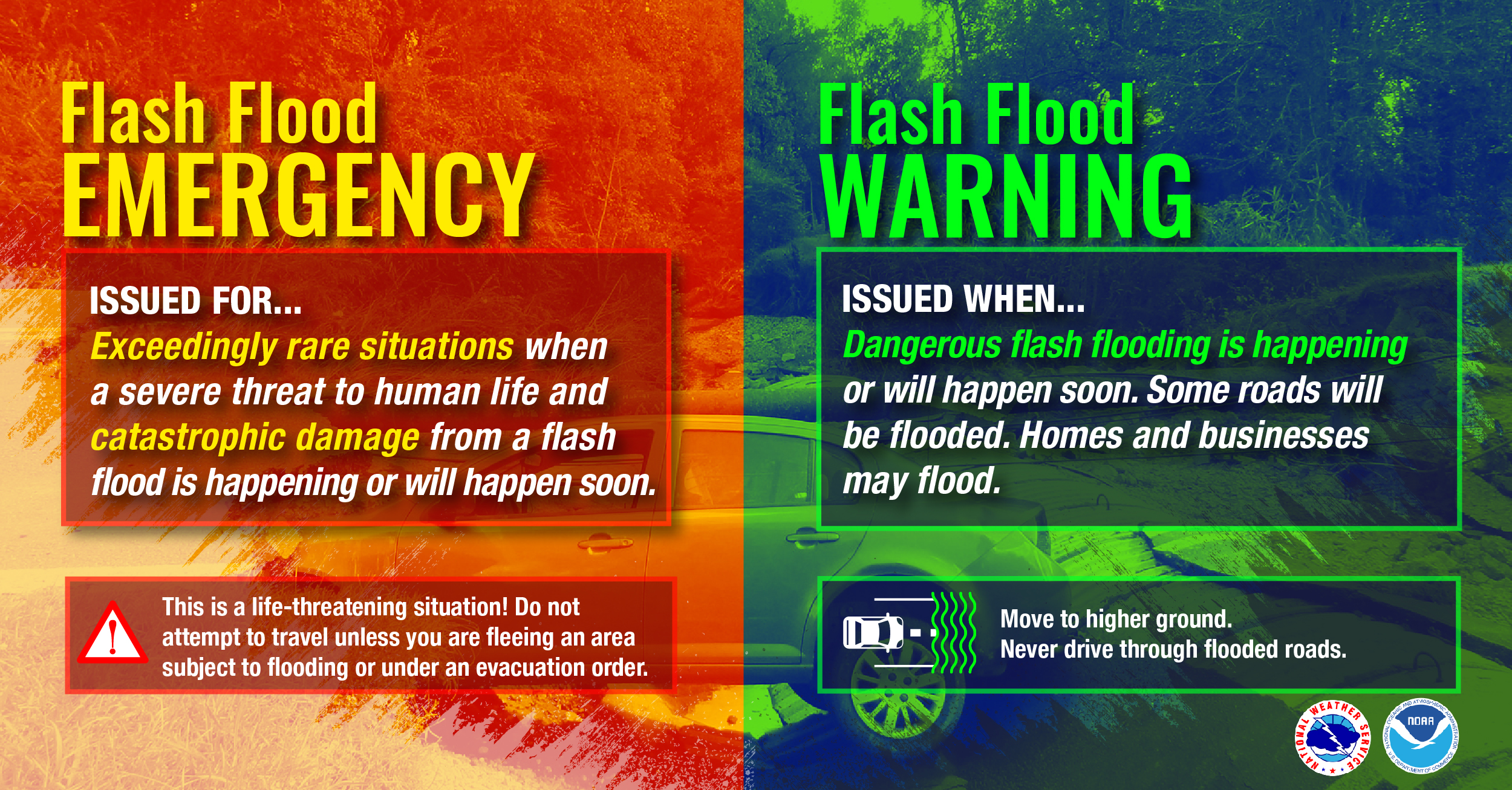Severe Weather Awareness Week: Flood Safety And Emergency Preparedness (Day 5)

Table of Contents
Severe Weather Awareness Week highlights the importance of preparedness for various weather events. Today, we focus on flood safety and emergency preparedness. Floods are a devastating natural disaster, capable of causing significant property damage and posing life-threatening risks. Understanding how to prepare for and respond to floods is crucial for protecting yourself and your loved ones. This guide offers actionable steps to ensure you're ready.
Understanding Flood Risks
Flooding can occur unexpectedly, making preparedness critical. Understanding your risk is the first step towards effective flood safety and emergency preparedness.
Identifying Flood-Prone Areas
Knowing if your home or community is at risk is paramount. Several resources can help you assess your flood risk:
- Online Flood Maps: FEMA's Flood Map Service Center (FEMA MSC) provides detailed flood risk information for most areas. Use these maps to determine your property's flood risk zone.
- Local Emergency Management: Your local emergency management agency is a valuable resource. They can provide specific information about your community's flood history and preparedness plans. Contact them to understand your local flood risks.
- Property History: Check your property's history. Has it flooded before? Previous flooding is a strong indicator of future risk. Talk to neighbors and check local records.
Consider these factors when identifying flood-prone areas:
- Learn about your community's flood history: Research past flood events to understand the potential for future occurrences.
- Identify potential flood sources: Rivers, streams, creeks, and drainage systems are all potential sources of flooding. Consider your proximity to these water bodies.
- Consider elevation and proximity to water bodies: Properties located in low-lying areas or near water sources are at a higher risk of flooding.
Recognizing Flood Warning Signs
Recognizing flood warning signs is essential for timely response. Familiarize yourself with the terminology used by weather services:
- Flood Watch: Conditions are favorable for flooding. Be prepared to take action.
- Flood Warning: Flooding is occurring or is imminent. Take immediate action.
- Flood Advisory: Flooding is possible in certain areas. Stay informed and monitor conditions.
Here's how to stay informed:
- Pay attention to weather reports: Regularly monitor weather forecasts from reliable sources like the National Weather Service.
- Monitor local news and social media for updates: Stay updated on evolving weather conditions and any local warnings or advisories.
- Be aware of rising water levels, unusual rainfall, and dam releases: These are all indicators of potential flooding.
Building a Flood Emergency Plan
A well-defined plan is critical for effective flood safety and emergency preparedness.
Creating a Family Communication Plan
Establish a clear plan for communication during a flood emergency.
- Establish a meeting point: Designate a safe location outside the flood-prone area where your family can meet if separated.
- Share emergency contact information: Ensure all family members have access to each other's contact information, including a contact person outside the affected area.
- Designate an out-of-state contact person: Having a contact person outside the affected area ensures a reliable communication link.
- Practice your communication plan regularly: Regular drills help ensure everyone knows their roles and responsibilities.
Assembling a Flood Emergency Kit
Prepare a kit with essential supplies to last for at least 72 hours:
- Water: One gallon of water per person per day.
- Non-perishable food: Easy-to-prepare items with a long shelf life.
- First-aid kit: Include essential medications and supplies.
- Medications: A supply of any necessary prescription and over-the-counter medications.
- Flashlights and batteries: Essential for navigating in the dark.
- Battery-powered radio: Stay informed about weather updates and emergency instructions.
- Important documents (copies): Insurance policies, identification, medical records.
- Cash: ATM's may be inaccessible.
Protecting Your Property
Take steps to minimize flood damage to your property:
- Elevate valuable possessions: Move important items to higher levels to prevent damage.
- Install flood barriers: Consider sandbags or commercially available flood barriers to protect your home's entrance.
- Consider flood insurance: Flood insurance can help cover repair costs after a flood.
- Elevate electrical systems: This helps prevent electrical damage from floodwater.
- Install sump pumps: These pumps can remove water from your basement or crawl space.
- Landscaping to divert water: Proper landscaping can help direct water away from your home.
Responding to a Flood Emergency
Knowing how to respond to a flood is critical for safety.
Evacuation Procedures
Follow official instructions immediately:
- Know your evacuation routes: Identify multiple routes to escape the flood-affected area.
- Heed official evacuation orders immediately: Don't delay; evacuation orders are issued for your safety.
- Never drive through flooded areas: Floodwaters can be deeper and faster than they appear. This is extremely dangerous.
- Follow designated evacuation routes: Use official routes to avoid hazards and ensure efficient evacuation.
- Bring your emergency kit: Your kit contains essential supplies for survival during evacuation.
Staying Safe During a Flood
Floodwater is dangerous:
- Avoid contact with floodwater: Floodwater can be contaminated with sewage, chemicals, and other harmful substances.
- Turn off utilities if instructed: This helps prevent electrical shocks and gas leaks.
- Stay away from downed power lines: Downed power lines pose a serious electrocution risk.
- Be aware of potential hazards like debris and weakened structures: Floodwaters can carry debris and weaken structures, creating further dangers.
Post-Flood Safety and Recovery
Post-flood safety is crucial:
- Be aware of mold growth: Mold can grow rapidly in damp environments.
- Use caution with electricity and gas: Check for damage to utility lines before using them.
- Report damage to authorities: Report damage to your property and any injuries to the relevant authorities.
- Contact insurance companies: File insurance claims as soon as possible after the flood.
Conclusion
Severe weather, particularly flooding, demands proactive preparation. By understanding flood risks, creating a comprehensive emergency plan, and knowing how to respond to a flood, you can significantly reduce the potential for harm and loss. Remember, preparedness is key to surviving and recovering from a flood.
Call to Action: Take the necessary steps to improve your flood safety and emergency preparedness today. Don't wait until it's too late. Learn more about flood safety and build your family's flood preparedness plan now! Share this information with your community to promote wider flood safety and emergency preparedness.

Featured Posts
-
 Ignorancja Czy Ucieczka Analiza Blamazu Prokuratorow W Polsce24
May 26, 2025
Ignorancja Czy Ucieczka Analiza Blamazu Prokuratorow W Polsce24
May 26, 2025 -
 Experience D C S Biggest Pride Celebration Yet
May 26, 2025
Experience D C S Biggest Pride Celebration Yet
May 26, 2025 -
 Herzliyas Salon Yevani A Restaurant Review By The Jerusalem Post
May 26, 2025
Herzliyas Salon Yevani A Restaurant Review By The Jerusalem Post
May 26, 2025 -
 Les Gens D Ici Approfondir Les Relations Et Les Interactions
May 26, 2025
Les Gens D Ici Approfondir Les Relations Et Les Interactions
May 26, 2025 -
 Yom Ha Zikaron Masa Israel Journey Organizes Largest English Language Observance
May 26, 2025
Yom Ha Zikaron Masa Israel Journey Organizes Largest English Language Observance
May 26, 2025
Latest Posts
-
 Leeds United Transfer News 31 Cap England Players Future Revealed
May 28, 2025
Leeds United Transfer News 31 Cap England Players Future Revealed
May 28, 2025 -
 Mc Kennas Back Cajustes Progress Trio Still Out Ipswich Town Injury Update
May 28, 2025
Mc Kennas Back Cajustes Progress Trio Still Out Ipswich Town Injury Update
May 28, 2025 -
 Confirmed Leeds United Close To Signing England International Latest Transfer News
May 28, 2025
Confirmed Leeds United Close To Signing England International Latest Transfer News
May 28, 2025 -
 Leeds United Transfer News England Stars Verbal Agreement And Player Stance
May 28, 2025
Leeds United Transfer News England Stars Verbal Agreement And Player Stance
May 28, 2025 -
 Manchester City Transfer News Serie A Star Targeted
May 28, 2025
Manchester City Transfer News Serie A Star Targeted
May 28, 2025
